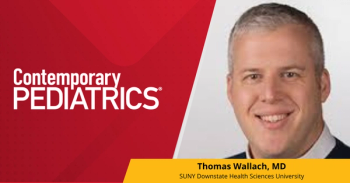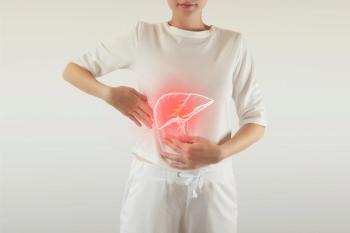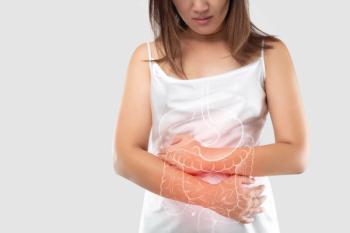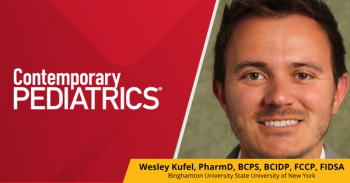
Novel, fixed, single-dose formulation to treat adolescent acne
Tretinoin and benzoyl peroxide Cream, 0.1%/3% (Twyneo; Galderma) , is a breakthrough prescription topical acne treatment that combines the 2 key ingredients tretinoin and benzoyl peroxide.
The burden of acne on teenagers
Acne is a common inflammatory disorder and the most frequent skin disease in adolescents, affecting at least 8 in 10 teens in the United States and impacting up to 50 million Americans.1,2 It has been described that “there is no single disease which causes more psychic trauma, more maladjustment between parents and children, more general insecurity and feelings of inferiority, and greater sums of psychic suffering than does acne vulgaris”.3
Specifically, acne commonly affects adolescents during a time when they are undergoing great social and physiological change and are particularly psychologically vulnerable.
Acne patients regularly report that acne takes a toll on their emotional health. Patients often display signs of depression, anxiety, poor self-image, decreased quality of life, and a general feeling of being alone.4-6 In addition, acne can severely impact a patient’s self-esteem.4 Nearly one-third of patients with facial acne reported feeling embarrassed and almost one-quarter described feeling ugly.5
One of the most distressing consequences of acne, however, is the frequent reports from patients that they avoid social events or skip school due to facial lesions. These findings are supported by surveys in adolescents with substantial acne who reported lower attachment to family and friends (mainly boys), not thriving at school (mainly girls) and less experience with romantic relationships (mainly boys); important factors that contribute to mental health problems in this age group.6
Despite 85% of people aged 12 to 25 years experiencing some form of acne,8 dermatology specialists are not consulted early enough and 70% of parents feel guilty for not seeking help earlier.7
Advanced acne is often more difficult to treat, and patients may experience treatment fatigue, making adherence an even greater challenge while adding to the burden that teens with acne encounter.8
Challenges with current teenage acne treatments
Acne is a chronic disease and effective treatment that permits longer-term use is required. Given the virtually ubiquitous nature of acne in teenagers, there remains an appreciable need for novel therapies, in particular, since treatment compliance remains poor despite the negative impact of acne.8
Adolescents discontinue treatment due to slow acne improvement, perception of worsening acne, side effects from topical treatments, prescription of inflexible multistep regimens, or frustration with over-the-counter products.11,9
While current treatment guidelines recommend multi-treatment and multi-application regimens, including topical retinoids as a cornerstone and topical therapy with retinoids and benzoyl peroxide (BPO) as the standard of care for acne of all severities, regimen simplification in terms of number of agents as well as frequency of application may promote teenage adherence to acne treatments.10
Combination treatment with benzoyl peroxide and a topical retinoid has been shown to be highly effective in the past; however, unencapsulated tretinoin is rapidly oxidized by benzoyl peroxide rendering it ineffective when combined in 1 formulation or when coapplied.1 Current treatments present with limiting side effect challenges of dryness, irritation, redness, and peeling that may require low-dose administration of therapies with some topical retinoids.1
Since acne is a chronic disease, long-term treatment is required. However, sometimes multi-regimen acne treatments contain antibiotics, which should only be used short-term to prevent emergence of antibacterial resistance. Therefore, while antibacterials can be used at the start of treatment, benzoyl peroxide/retinoid may be needed long-term.1
A novel, fixed-dose, once-daily treatment using trusted ingredients
Tretinoin and benzoyl peroxide Cream, 0.1%/3% (Twyneo; Galderma) , is a breakthrough prescription topical acne treatment that combines the 2 key ingredients tretinoin and benzoyl peroxide.11 For the first time, patented microencapsulation technology in layered silicon dioxide shells (microcapsules) permits co-application of the 2 ingredients12,13 as a once-daily application.14 A single daily application may improve adherence to use, especially for teenagers who often lead busy lives without regular schedules.13
The individual encapsulation of the actives separates the ingredients and prevents tretinoin oxidation and degradation by BPO.16 Additionally, the microcapsules allow for the gradual release of tretinoin and BPO over time, permitting the application of the highest concentration of tretinoin currently available while providing much improved tolerability.14,15 Currently, tretinoin and benzoyl peroxide is the only fixed-dose combination tretinoin/BPO approved by the FDA for the treatment of inflammatory and noninflammatory lesions of acne in patients 9 years or older.14
Tretinoin and benzoyl peroxide has been assessed in 2 pivotal trials, which included subjects aged 9 years or older and reported statistically significant acne improvement in as little as two weeks* with continued improvement over 12 weeks.18 These studies demonstrated a 24% decrease in inflammatory lesions at two weeks and a 58% to 66% decrease at 12 weeks†; with 27% to 40% of subjects achieving clear or almost clear skin by the end of the trial‡.18In addition to these outcomes, over half of the subjects in the active arm were satisfied with their treatment at two weeks and by 12 weeks, 8 in 10 subjects were satisfied with their results.18 Nine in 10 subjects stayed on treatment until trial end.18 Tretinoin and benzoyl peroxide was well tolerated with most side effects being mild to moderate.18 Adverse events occurring in more than 2% of subjects were those expected from acne treatment including application site pain, dryness, erythema and exfoliation.18 The treatment is contraindicated in subjects with a history of hypersensitivity reaction to benzoyl peroxide or any components of tretinoin and benzoyl peroxide.14 In the past 6 months, I have used tretinoin and benzoyl peroxide on my patients and have found efficacy and tolerability to be in keeping with the data from the pivotal trials.
What does innovation for acne treatment in teenagers look like?
While no direct comparisons can be made to other tretinoin therapies, tretinoin and benzoyl peroxide offers the option for a once-daily, well-tolerated acne treatment for adolescents that contains the highest possible dose of tretinoin with 3% BPO,14,17,18 2 of dermatology's most prescribed acne ingredients, in a single fixed-dose regimen for gradual release onto the skin.14,16-18
A simplified treatment regimen has the potential to improve treatment adherence,13 which is particularly important in children and teens. This may be particularly useful in teenage boys who are historically the least adherent demographic and may benefit from two actives with one application. Getting 2 drugs on their face with only one application is helpful.
In addition, the social, psychological, and physical burden associated with acne are particularly prevalent in adolescents, a group that is already undergoing dramatic changes that impact their mental health and self-image.4-8 Therefore, acne treatment that is effective with low levels of irritations and side effects17,18 may provide the required support to help alleviate some of the burden experienced by this age group.
*Noninflammatory lesion reduction; †versus 20% reduction of inflammatory lesions at 2 weeks with vehicle and 44–51% inflammatory lesion reduction in vehicle at 12 weeks; ‡versus 14–15% in vehicle, based on multiple imputation.
IMPORTANT SAFETY INFORMATION
Indication: TWYNEO (tretinoin and benzoyl peroxide) Cream, 0.1%/3% is indicated for the topical treatment of acne vulgaris in adults and pediatric patients 9 years of age and older. Adverse Events: The most common adverse reactions (incidence ≥ 1%) in patients treated with TWYNEO Cream were pain (stinging, burning, or pain), dryness, exfoliation, erythema (redness), dermatitis, pruritus (itching) and irritation - all at the application site. Warnings/Precautions: Patients using TWYNEO Cream may experience hypersensitivity reactions, including anaphylaxis (acute allergic reaction), angioedema (rapid swelling), and urticaria (hives). If serious hypersensitivity reaction occurs, discontinue use of TWYNEO Cream immediately and seek medical attention. Skin irritation may be experienced, including application site dryness, pain (stinging, burning or pain), exfoliation, erythema (redness), dermatitis, pruritus (itching) and irritation. Depending upon the severity, use a moisturizer, reduce the frequency of the application, or discontinue use. Avoid application to cuts, abrasions, eczematous, or sunburned skin. TWYNEO Cream may increase photosensitivity, sensitivity to ultraviolet light. Minimize or avoid exposure to natural or artificial sunlight (tanning beds or UVA/B treatment). Use sunscreen or protective clothing when sun exposure cannot be avoided. Discontinue use of TWYNEO Cream at the first evidence of sunburn.
You are encouraged to report negative side effects of prescription drugs to the FDA.
Visit
Tretinoin and benzoyl peroxide Cream has been approved by the FDA and can be accessed at
Hilary Baldwin, MD, has acted as advisor for Galderma L.P. and received grants to participate in Galderma clinical trials.
References:
- Zaenglein AL, et al. Guidelines of care for the management of acne vulgaris. J Am Acad Dermatol. 2016;74:945–73.
- The Dermatologist. Acne Vulgaris:The psychosocial & psychological burden of illness. 2013. Available at: https://www.hmpgloballearningnetwork.com/site/thederm/site/cathlab/event/acne-vulgaristhe-psychosocial-and-psychological-burden-illness#:~:text=Acne%20commonly%20affects%20young%20people,impact%20their%20global%20self%2Desteem. Last accessed: November 21, 2022.
- Sulzberger MB, Zaidens SH. Psychogenic factors in dermatological disorders. Med Clin North Am. 1948;32:669-672.
- Gorelick J, et al. Acne-related quality of life among female adults of different races/ethnicities. J Dermatol Nurses Assoc. 2015;7:154–62.
- Nguyen CM, et al. The psychosocial impact of acne, vitiligo, and psoriasis: a review. Clin Cosmet Investig Dermatol. 2016;9:383–92.
- American Academy of Dermatology Association. Acne can affect more than your skin. Available at: https://www.aad.org/public/diseases/acne/acne-emotional-effects. Last accessed: July 13, 2022.
- Greydanus DE, et al. Acne in the first three decades of life: an update of a disorder with profound implications for all decades of life. Dis Mon. 2021;67:101103.
- Galderma Laboratories, L.P. Burden summary report: Combined facial & truncal acne. March 2021.
- Halvorsen JA, Stern RS, Dalgard F, Thoresen M, Bjertness E, Lien L. Suicidal ideation, mental health problems, and social impairment are increased in adolescents with acne: a population-based study. J Invest Dermatol. 2011;131(2):363-370.
- Practical dermatology. Available at: https://practicaldermatology.com/news/survey-parents-extremely-worried-about-the-physical-and-emotional-toll-that-severe-acne-takes-on-teens?c4src=news-landing:feed. Last accessed: November 21, 2022.
- Tuchayi SM, et al. Interventions to increase adherence to acne treatment. Patient Prefer Adherence. 2016;10:2091–2096.
- Anderson KL, et al. Frequency of primary nonadherence to acne treatment. JAMA Dermatol. 2015;151(6):623–626.
- Yentzer BA, et al. Simplifying regimens promotes greater adherence and outcomes with topical acne medications: a randomized controlled trial. Cutis. 2010;86:103–8.
- TWYNEO (tretinoin and benzoyl peroxide) cream. Prescribing Information, July 2021.
- Sol-Gel Technologies Ltd. Sol-Gel Technologies announces FDA approval of TWYNEO. Sol-Gel Advanced Topical Therapy. Available at: htt¬ps://ir.sol-gel.com/news-releases/news-release-details/sol-gel-technologies-announces-fda-approval-twyneor.
- Erlich M, et al. Structure elucidation of silica-based core-shell microencapsulated drugs for topical applications by cryogenic scanning electron microscopy. J Colloid Interface Sci. 2020;579:778–85.
- Galderma Laboratories, L.P. Clinical Study Report SGT-65-04. 2020, May 28.
- Galderma Laboratories LP. Clinical Study Report SGT-65-05. 2020, June 5.
Newsletter
Access practical, evidence-based guidance to support better care for our youngest patients. Join our email list for the latest clinical updates.














